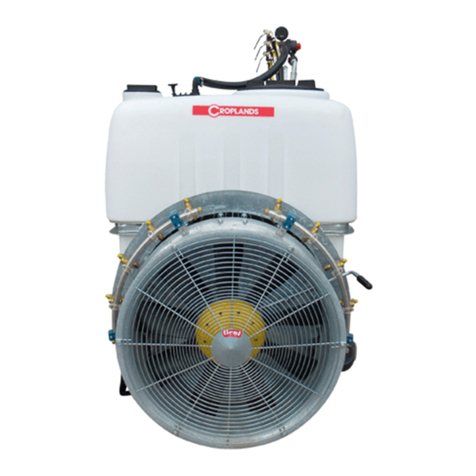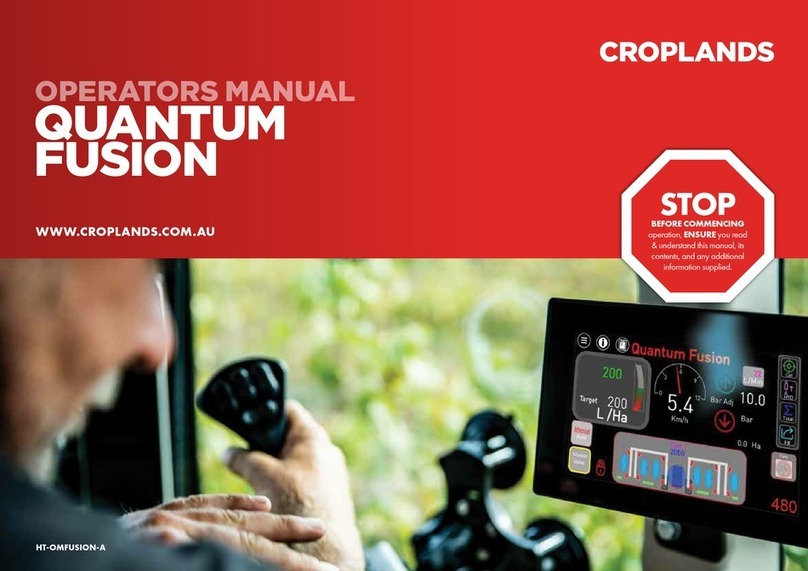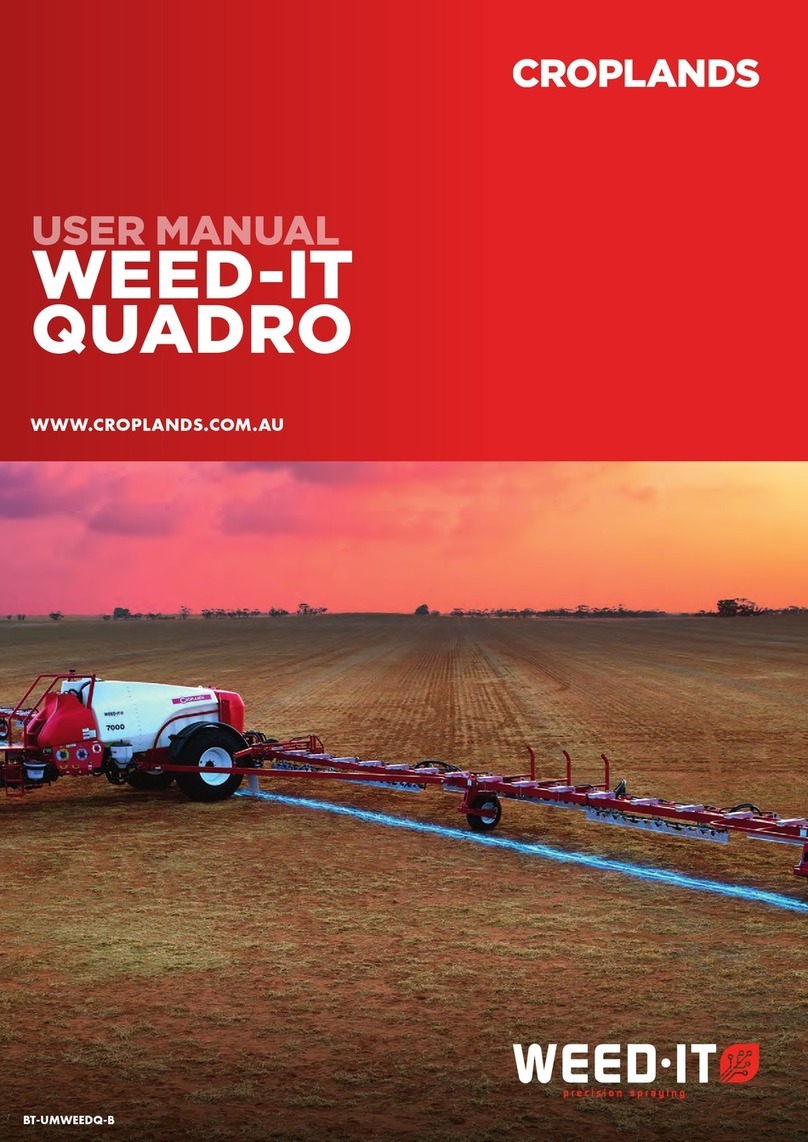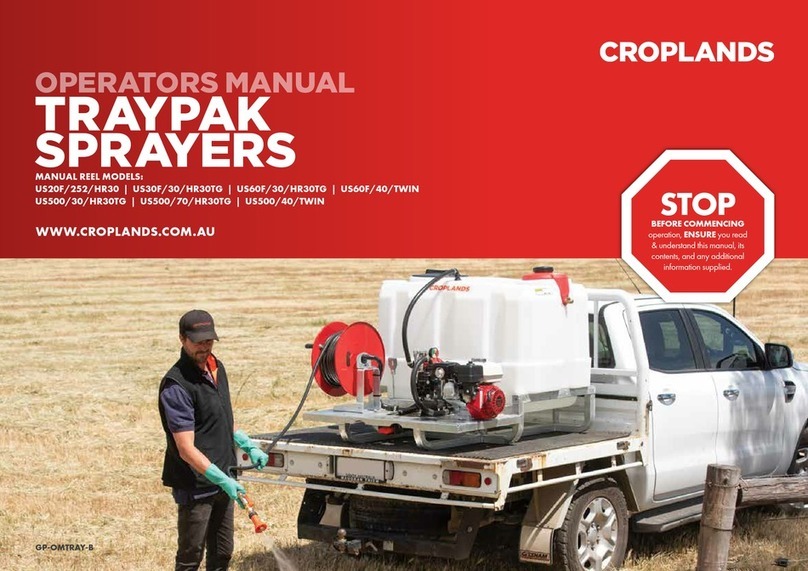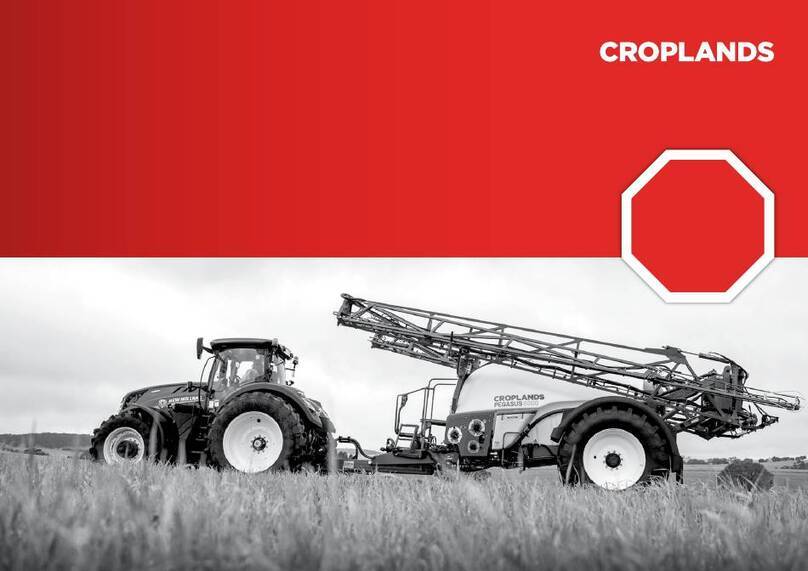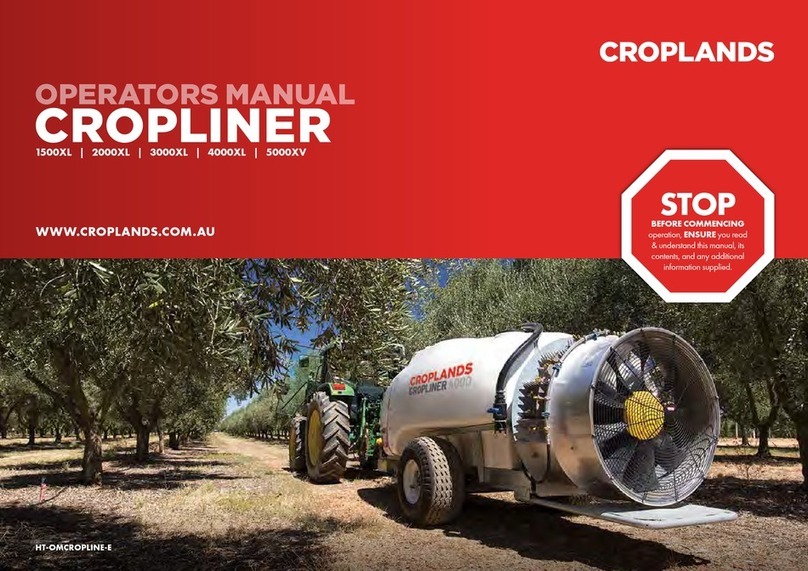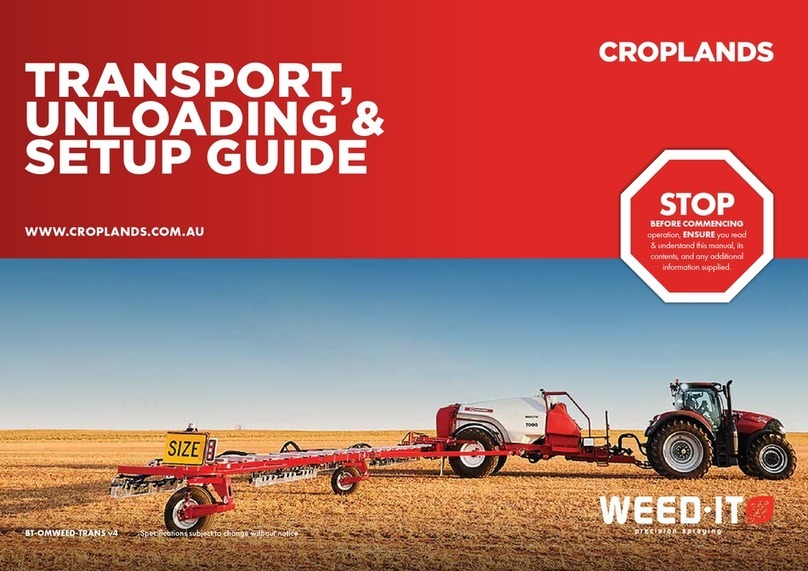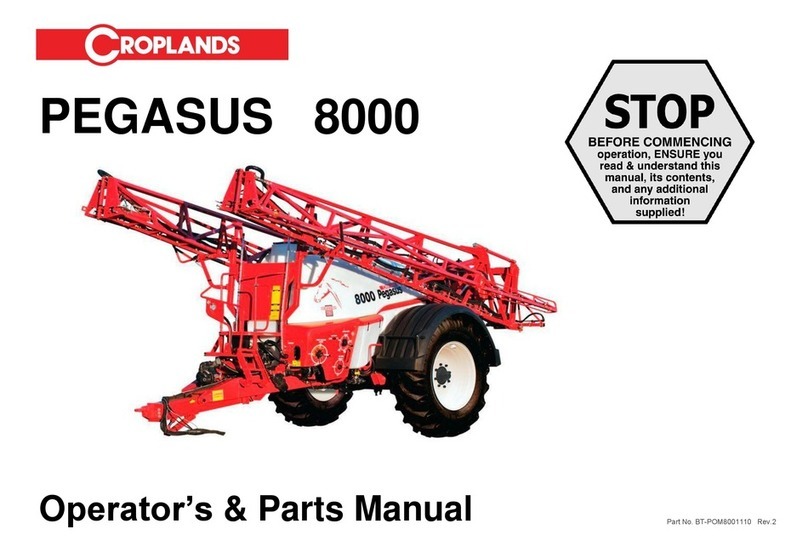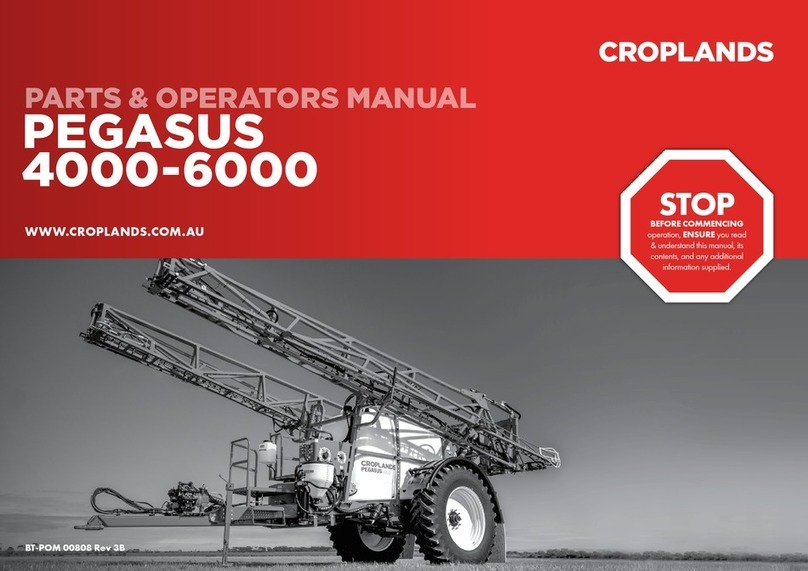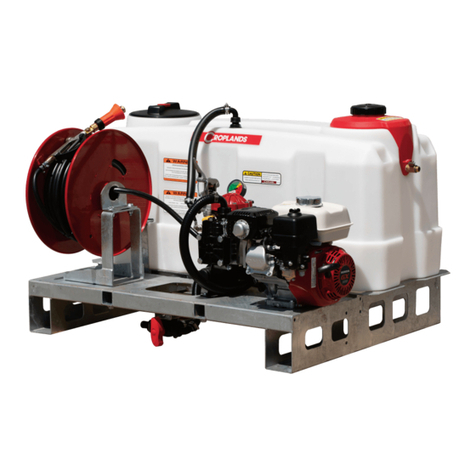
GP-POMBA001108 Rev 4
4
SECTION 1
IMPORTANT INFORMATION
ABOUT THIS MANUAL
This GENERAL manual is a generic overview for setting
up, operating and maintaining your Croplands sprayer
for which there is not a specific manual.
In addition to this manual, the sprayer will be delivered
with the General Safety Manual (GP-SAFE-A).
For details not covered by the manuals, please contact
Technical Support on 1300 650 724.
Some features and options explained in this manual may
not be installed on your sprayer.
Please pass on this manual with the sprayer at the time
of resale for usage by the new owner.
This manual, was first published in 2008 as part number,
GP-POMBA001108. This April 2021(Rev 4) issue has
updates to Sections 1, 2, 3 and 5.
Check online as there may be more recent revisions
of this manual. www.croplands.com.au
TERMINOLOGY
These terms/symbols used throughout
this manual:
NOTE
This Note sign is in place to convey useful
information and will help you to identify
the best possible way to operate the
machine.
CAUTION
This Caution sign shows the potential for
incident. An incident may include damage
to the machine itself, or possible injury to
the operator.
WARNING
This warning sign shows the potential for
risk or injury and highlights the need for
steps to be taken to protect ones safety.
DANGER
This Danger sign will be used in areas where
the highest risk is present. Always read the
information on these signs and ensure you
are taking steps to prevent risk or injury.
BEFORE OPERATING YOUR SPRAYER
Before attempting to use your sprayer, make sure you
read all Operator Manuals for this sprayer including but
not limited to:
This Operator’s Manual, and all other supplied manuals
for items such as safety, pumps, PTO, controller, boom etc.
And properly understand:
• All Safety Issues.
• Assembly & Installation instructions.
• Calibration of the sprayer.
• Sprayer Operation.
• Sprayer Maintenance.
ABOUT BROADACRE SPRAYERS
Croplands broadacre sprayers come in several tank sizes,
with boom widths to suit a host of different applications.
The primary applications are generally broadacre
cropping and pasture renovation and preservation. Some
of the Croplands broadacre range can also be used
for liquid fertiliser operations. Other mainstream uses
of Croplands broadacre machinery include Intensive
agricultural spraying and row cropping.
Croplands broadacre range has many options, which
include boom widths and style, pump volumes, pressure
and drive type, mixing systems, nozzle size and type,
controllers and tractor connection to name a few.
Depending on the options you have chosen for your
Croplands sprayer, some of the information and parts listings
covered in this supplement may not apply to you machine.
Again, if you have any questions regarding to how this
manual pertains to your machine, please contact your
nearest Croplands dealer for assistance.
DANGER
!
Probability of death or serious
injury if an accident occurs
WARNING
!
To stress potential dangers and the
importance of personal safety.
CAUTION
!
To highlight potential injury or
machinery damage.
NOTE
To convey useful operating information.
